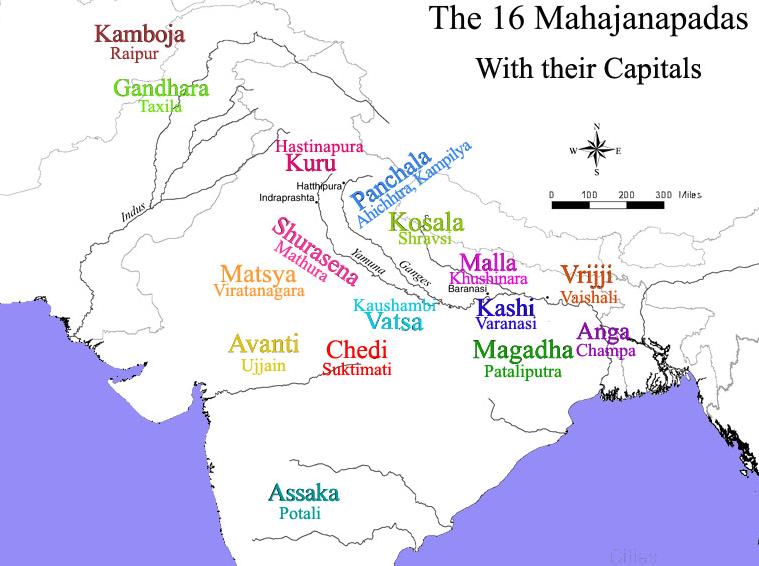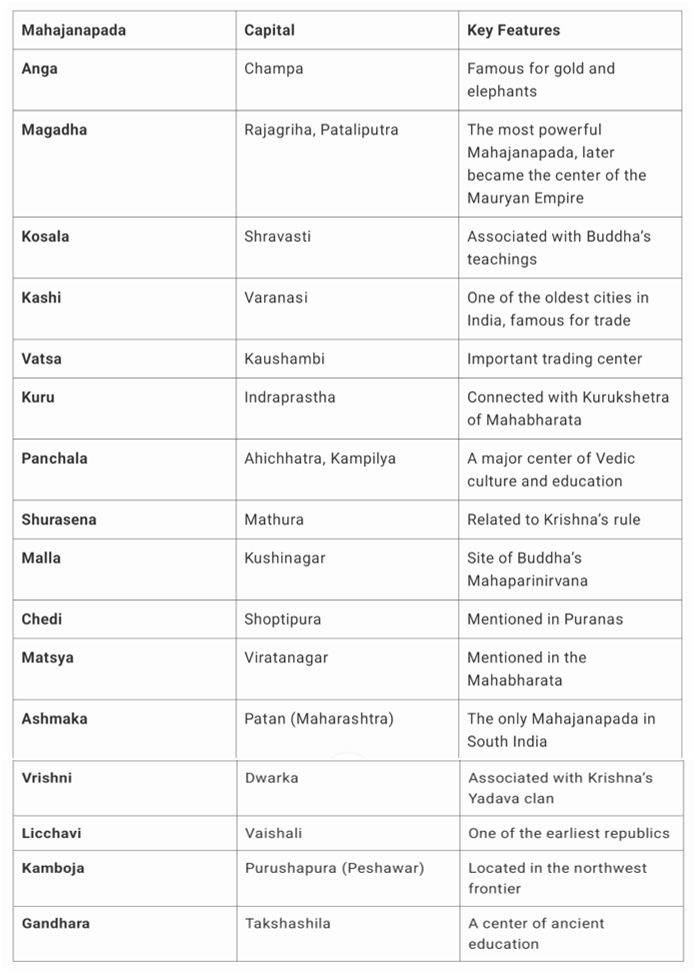

The Mahajanapada era (600 - 400 BCE) is considered a significant period in Indian history. During this time, the foundation for political stability, urbanization and economic prosperity was laid. The emergence of Mahajanapadas was a natural evolution from the later Vedic period, where smaller tribal settlements gave way to large and stable political entities.
Timeline and Background of the Mahajanapada Era
During the Later Vedic period (1000 - 600 BCE), the Aryan society became more settled, particularly in the Ganga-Yamuna basin.
In this phase, small tribal settlements known as Janapadas were formed, but over time, some of these grew into Mahajanapadas (great territorial states).
This era saw advancements in metal usage, agricultural production, monetary transactions, trade and urbanization.
1. Concept and Types of Mahajanapadas
The term 'Mahajanapada' is derived from ‘Maha’ (great) + ‘Janapada’ (territory with a population).
Two Main Types of Mahajanapadas:
1. Monarchical Mahajanapadas (Kingdoms)
These were ruled by hereditary kings.
Examples: Magadha, Kosala, Kashi, Vatsa, Kuru, Panchala
2. Republican Mahajanapadas (Ganatantra)
These were ruled by councils rather than a king.
Examples: Vrishni, Licchavi, Shakya, Malla, Kamboja
The Mahajanapada period witnessed the existence of 16 major Mahajanapadas, as mentioned in Buddhist texts like Anguttara Nikaya and Mahavastu.
2. The Sixteen Mahajanapadas and Their Features
3. Political Structure of the Mahajanapada Era
Monarchical Mahajanapadas:
Hereditary kings ruled these states.
The king's main responsibilities were agriculture, defense and justice.
The administration included a priest, minister, army chief and tax officer.
The power of the Sabha and Samiti (councils) was reduced, making the king more autocratic.
Example: The kings of Magadha strengthened their empire by building a powerful military.
Republican Mahajanapadas:
These were governed by a council called Sangha.
There was no single ruler; governance was collective.
Citizens (mostly Kshatriya men) participated in decision-making.
Example: The Licchavi and Shakya republics had a strong democratic tradition.
4. Economic and Social Conditions
A. Economic Conditions
Agriculture was the main occupation.
Iron tools improved farming techniques.
The use of coins (‘Karshapana’) facilitated trade.
Trade routes: The Mahajanapadas were connected through the Uttarapatha and Dakshinapatha trade routes.
Major trade centers: Varanasi, Takshashila and Pataliputra.
B. Social Conditions
The caste system became more rigid.
The influence of Brahmins and religious rituals increased.
The status of women declined, limiting their access to education and politics.
The rise of Buddhism and Jainism challenged caste hierarchy.
5. The End of the Mahajanapada Era and the Rise of Magadha
Magadha emerged as the most powerful Mahajanapada.
Magadha's rulers expanded their territory by conquering other Mahajanapadas.
Bimbisara, Ajatashatru and Mahapadma Nanda played key roles in Magadha’s rise.
The Mahajanapada era ended with the rise of Chandragupta Maurya (321 BCE), marking the beginning of the Mauryan Empire, India’s first great centralized state.
Conclusion
The Mahajanapada era was a crucial period in the evolution of India’s political, social, and economic systems. It is an important topic for UPSC because it helps understand the development of governance structures, the comparison between monarchies and republics, and the emergence of Magadha as an imperial power.


